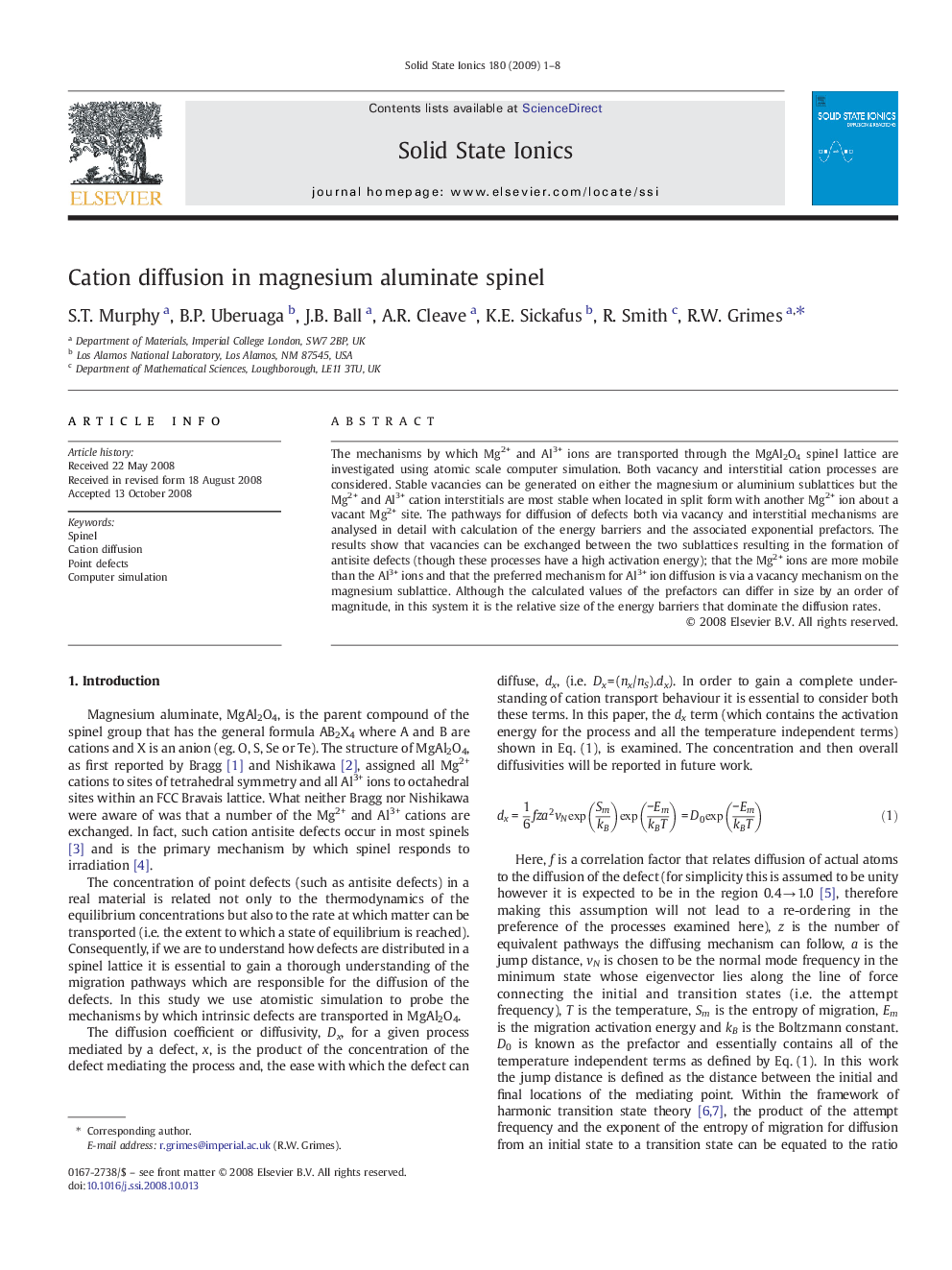| Article ID | Journal | Published Year | Pages | File Type |
|---|---|---|---|---|
| 1297025 | Solid State Ionics | 2009 | 8 Pages |
The mechanisms by which Mg2+ and Al3+ ions are transported through the MgAl2O4 spinel lattice are investigated using atomic scale computer simulation. Both vacancy and interstitial cation processes are considered. Stable vacancies can be generated on either the magnesium or aluminium sublattices but the Mg2+ and Al3+ cation interstitials are most stable when located in split form with another Mg2+ ion about a vacant Mg2+ site. The pathways for diffusion of defects both via vacancy and interstitial mechanisms are analysed in detail with calculation of the energy barriers and the associated exponential prefactors. The results show that vacancies can be exchanged between the two sublattices resulting in the formation of antisite defects (though these processes have a high activation energy); that the Mg2+ ions are more mobile than the Al3+ ions and that the preferred mechanism for Al3+ ion diffusion is via a vacancy mechanism on the magnesium sublattice. Although the calculated values of the prefactors can differ in size by an order of magnitude, in this system it is the relative size of the energy barriers that dominate the diffusion rates.
